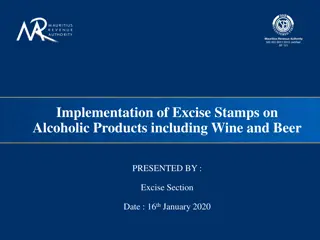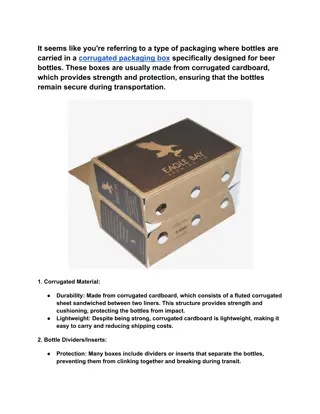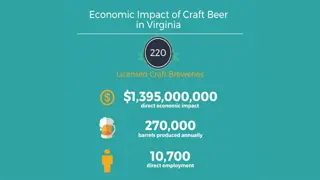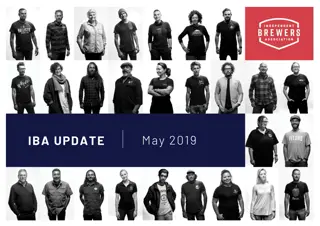Navigating Challenges in Adapting Beer Recipes Across Breweries
Exploring the complexities faced by contract brewers when adapting beer recipes between different breweries, covering aspects like water profiles, malt selection, hop varieties, yeast strains, and equipment considerations. Each brewery presents unique hurdles in maintaining recipe consistency, requiring adjustments and ingenuity to overcome limitations and discrepancies.
Download Presentation

Please find below an Image/Link to download the presentation.
The content on the website is provided AS IS for your information and personal use only. It may not be sold, licensed, or shared on other websites without obtaining consent from the author. Download presentation by click this link. If you encounter any issues during the download, it is possible that the publisher has removed the file from their server.
E N D
Presentation Transcript
Adapting Beer Recipes Between Breweries
The Contract Brewer Perspective
1,800 BC The earliest known recipe for beer is recorded.
Challenges As a contract brewer there is limited control over raw materials Yeast availability may vary Invariably there is a different water profile Invariably the brewing equipment is different
Water Water is the terroir of beer. Not only do you have typical water profiles for your various products but each brewery may have very different water profiles. There is only so much you can do at a craft brewery level. Unless you are using reverse osmosis water you can only approximate the profile you want
Malt If your host brewery uses bulk malt you are likely stuck with whatever supplier they have. Specialty malt may be something you can order or in some cases you will have to find substitutions from the supplier your other brewery uses.
Hops Your second brewery may already have hop contracts that don t include your preferred hop varieties. If you have hop contracts yourself you can ensure the same hops for each brewery.
Yeast My experience is that breweries willing to do contract work have particular house strains they want to use and are reluctant to introduce new strains. You may have to modify the recipe to account for different attenuations or different ester contributions.
Equipment Mash tun efficiencies Evaporation at boil hop efficiency Fermenter configuration
Tools at your disposal Few breweries will have analytical tools for alcohol, IBUs, etc Most will be able to measure carbonation levels. Your most reliable tool is your taste.
You can establish the units you wish to use
Choose water profiles. Establish a preferred water profile for your beer
Tools for various calculations of colour, gravity, etc.
Calculations for utilization
And most useful a tool to scale a recipe taking into account the efficiency of the second or third brewery
How close can you get Close Contract brewing out of more than one brewery is basically to brew in various regions and eliminate shipping. As such the product is not often sold in the same geographic area limiting comparisons























